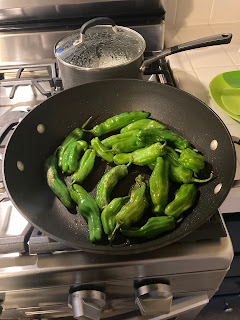Keys to getting the most out of your food
Choosing fresh, unprocessed foods provides us the best nutrition. Packaged foods usually have something we do not want
in them. Things such as increased
processing, added sugars, and artificial flavors are lurking behind many of our
packaged foods. But lets be real, how many of us have enough time to
prepare three meals, plus snacks from scratch everyday? None of us!!! Inevitably, we
will turn to packaged items. When we do, here are some things to keep in mind
 |
| What I wish labels looked like |
The following are some things to keep in mind when
interpreting those numbers on the label:
- Calories will be different for every person. No two people burn the same amount of calories when resting or exercising. Metabolic testing is available if you do want to know what your exact number is.
- Saturated fat can lead to high cholesterol. It is recommended that less than 10% of our daily calories come from saturated fats. For those with high cholesterol, this number is reduced to 7%. Look on the label under the %Daily Value column. If it is more than 10%, put it back on the shelf, if it is between 7-10,% it is an okay choice, less than 7, it is a good choice.
 |
| http://the-holidaze.blogspot.com/2013/09/ pillsbury-pumpkin-cookies.html |
- Trans fat should be avoided. Increased levels of trans fats in the diet lead to high LDL (bad cholesterol) levels. If there is any trans fat on the label, choose another product. Based on the rules of food labeling, a product with .5g or less can be rounded down. So some foods may have .5g of trans fat, but will say 0g on the label! This usually occurs in ready-to-bake products (crescent rolls, piecrusts, delicious deserts, ect.). If the ingredients list includes anything that has been “partially hydrogenated” then it most likely contains a small amount of trans fat.
- Cholesterol intake should also be low. We need less than 300mg total per day. So the %Daily Value should be less than 10%
- Sodium too can be a problem as high amounts of sodium lead to high blood pressure. Not surprisingly, sodium is usually high in packaged foods. Anything under 120mg is ideal, but up to 480mg could be okay.
 |
| What happens when you don't feed your brain? The Walking Dead on AMC |
- Carbohydrates get a bad reputation these days, but the truth is they are our brain’s only source of fuel. We need to feed our brains- wisely. On food labels, sugar and fiber are listed under carbohydrates, these are important numbers to pay attention too.
- Dietary Fiber keeps us full, prevents constipation, and can even have a cholesterol lower effect. Three to five grams per serving makes that product a good choice.
- Sugar, when added to a food product, should be avoided at all costs. The USDA might start listing the grams of added sugars on the label future, but we are not there yet. For those who have had weight loss surgery, it does not matter if the sugar is natural or added, Any sugar can still lead to dumping syndrome. Try to choose products that have less than 10g of sugar per serving.
- Protein- The amount of protein needed varies per person and depends on how much activity they do. A good rule is to try for 20-30 g of protein at each meal.
Okay, I know, it will take forever at the grocery
store if you go through each item and try to hit all of these targets. Luckily
there are tools out there to help us out.
 |
| nuval.com |
If you are simply wanting to find out information on your favorite foods
you can also try the Environmental Working Groups new Food Score Website. Just
search the item and it will provide you with a score for that food and explain why it received that score. The scores are based on nutrition
content, ingredients, and amount of processing. Soon this will be an
app, so you can scan the food at the grocery store and see what score it
receives. Link to Food Score Website
Pumpkin Chocolate Chip Bars
Makes 16 snack sized bars
Recipe corner:
Because it is holiday season, I found a recipe with my favorite flavor, pumpkin! This recipe was created by Sarah Waybright at www.fitsmiForMoms.comPumpkin Chocolate Chip Bars
 |
| http://www.history.org/Foundation/journal/ Autumn09/pumpkins.cfm |
Ingredients:
2 cups old fashioned rolled oats
1 cup slivered almonds
1/4 cup quinoa
1 teaspoon pumpkin pie spice
1/2 teaspoon kosher salt
1/2 cup brown sugar
1 apple, diced, unpeeled
1 very ripe banana, mashed
1 cup pumpkin puree
1 cup dark chocolate chips
Directions:
Pre-heat oven to 325 degrees. Spray an 8 x 8 inch pan with non-stick cooking spray. In a large bowl, combine the oats, quinoa, almonds, chocolate chips, pumpkin pie spice, and salt. In a small bowl, fold together the sugar, apple, banana, and pumpkin puree until combined and smooth. Add pumpkin mixture to oat mixture and stir until all the oats are coated. Place oat mixture into the prepared pan and spread to even. Bake for 30-35 minutes until golden brown. Let the bars cool, cut into squares.
Nutrition:
1 bar contains: about 200 calories, 5 grams of fiber, and 7 grams of protein.
*these numbers are estimates and will vary based on ingredients you choose, measuring, and bar size.



Comments
Post a Comment